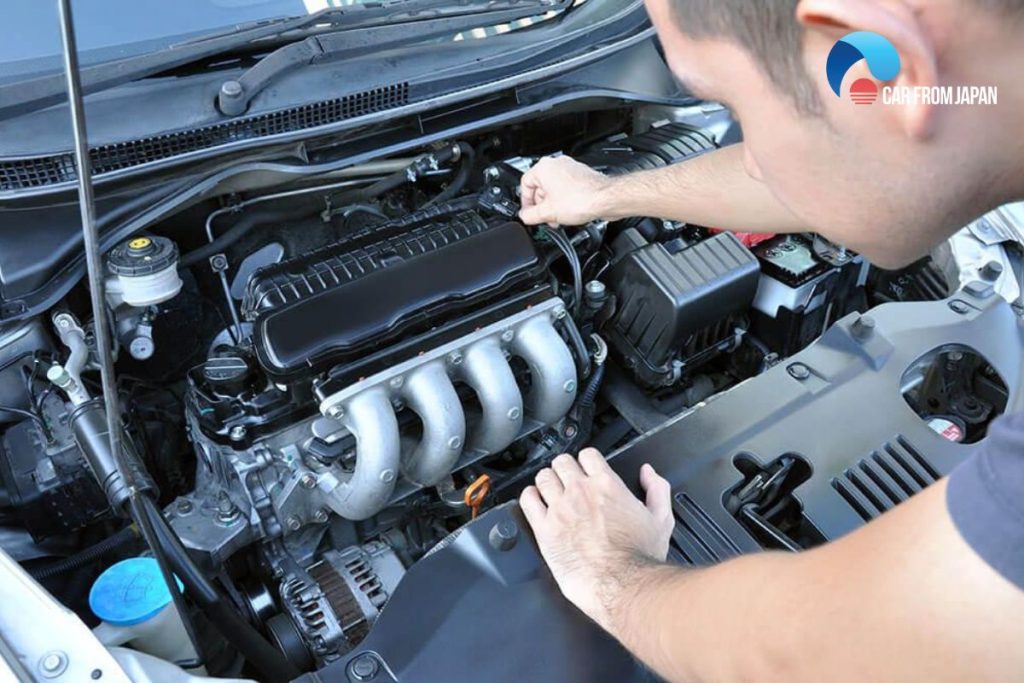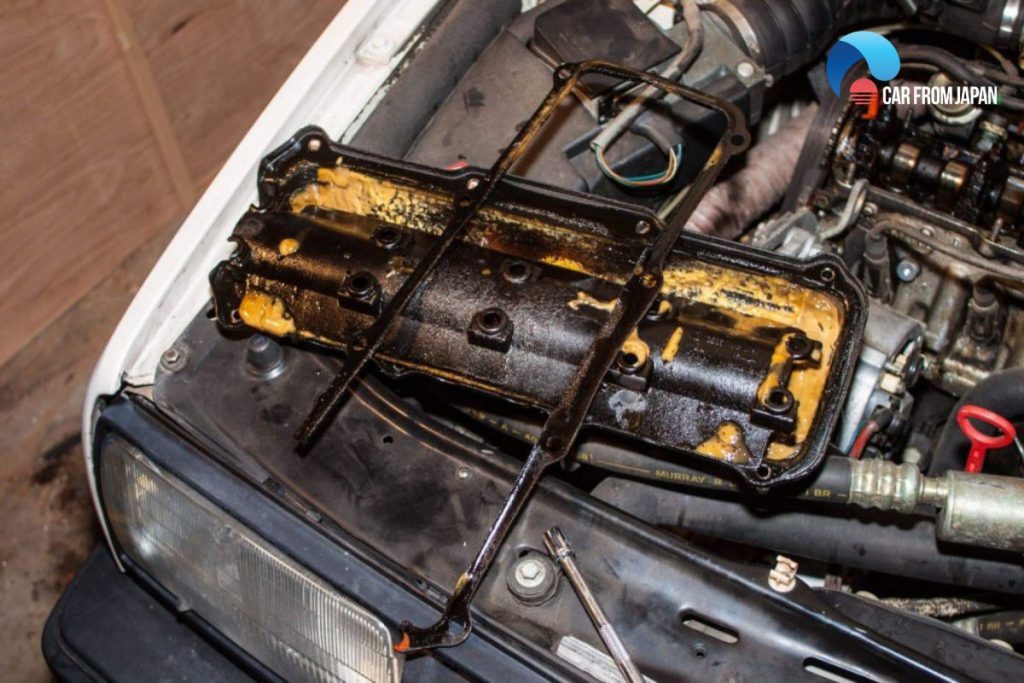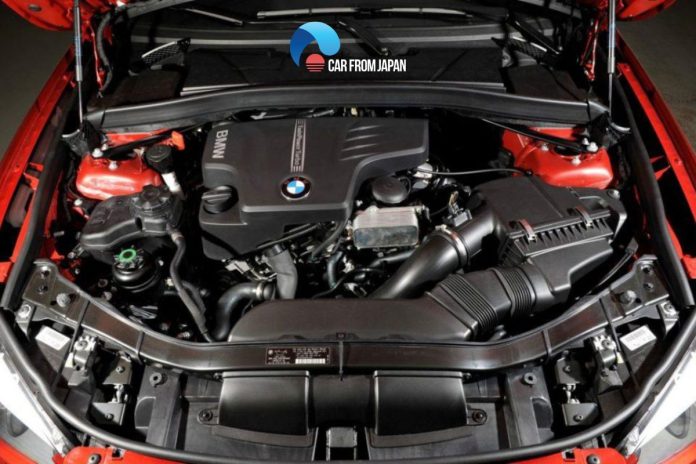Your car shuts off after a loud clunking noise and won’t start. Annoying, right? It can happen even when the battery is new and the tank is full.
The signs indicate the engine locking problem, which can be scary because the repair could be extremely expensive.
What should you do to avoid such expenses other than changing engine oil regularly and servicing the car on a regular basis? You should be on the lookout for seized engine symptoms.
Contents
- What Does A Seized Engine Sound Like?
- Seized Engine Symptoms: How To Tell If Engine Is Seized?
- FAQs on Seized Engine Symptoms
- What’s the difference between a seized engine and a locked starter?
- Does a clicking sound when trying to start always mean the engine is seized?
- Can an engine seize while driving and then restart later?
- How can you tell if the engine is seized without removing any parts?
- Is it worth fixing a seized engine?
What Does A Seized Engine Sound Like?
There are specific engine locked up symptoms, which give hints about the disaster you are going to face. However, there is also a distinctive seized engine sound that foretells the impending issue.
When an engine seizes, it means that the internal components, such as the pistons and bearings, have become stuck or frozen, preventing the engine from rotating freely.
The sound of a seized engine can vary depending on the severity of the seizure and the specific circumstances, but there are a few common signs you might notice.
When the problem is at the initial stage, you will hear light tapping or knocking sounds when driving the car.
This noise occurs because the starter motor is trying to turn the engine but cannot rotate due to the seized components. The starter motor may continue to engage but fail to start the engine.
The next stage involves thundering knocking sounds barring metallic striking. This condition is known as a ‘dead knock’ and it happens when the piston rod bangs into the crankshaft.
In some cases, you will not hear any sound when attempting to start the engine. This lack of sound typically occurs because the engine is completely locked up, preventing any movement.
You should take the car to a garage after spotting the seized engine symptoms. Diagnosing it sooner can spare you thousands of dollars.

Seized Engine Symptoms: How To Tell If Engine Is Seized?
It is necessary to take the car for an engine checkup in the event of subpar engine performance, the check engine oil light, and weird noises coming from the engine. Stay alert of these seized engine symptoms.
Blaring sound
A standard vehicle when operating should only emit 3 sounds that are considered “safe”, which are the sound of the engine, the horn, and the sound of the entertainment speaker system.
Other unusual noises are considered “warnings” and need special attention from car owners. They may be a car engine error.
It has already been discussed that booming knocking or clunking sounds can also be indicative of a locked-up engine. The noise is the result of the state striking the flywheel.
Read More: The Signs and Solutions for Bad Starter Sounds
Fumes
Fumes or fire coming from under the hood can be another symptom of a seized-up motor.
As the starter is unable to start the engine in this condition, the wiring can be overheated, causing smoke and even fire sometimes.
Additionally, based on the color of the smoke, some problems can also be diagnosed:
Green smoke
It means the engine is burning oil and there may be a potential leak somewhere in the car’s engine. If this condition is not corrected, it will lead to oil loss and damage to engine parts
White smoke
When the vehicle emits thick, white smoke, it almost certainly signals a problem with the engine’s cylinder head gasket.
When seeing this sign, the car owner should quickly take the car for repair to avoid complete damage to the engine.
In addition, the exhaust pipe spewing white smoke also shows that the car’s transmission oil is being burned, potentially leading to a stuck gear shift.
Check engine light
If the Check Engine light (engine warning light) on the dashboard continuously lights up, it is a warning sign of some problems occurring in the car’s engine. For example:
- The Oxygen Sensor needs to be replaced.
- The mass air intake sensor (MAF) needs to be replaced.
- The exhaust filter is damaged and needs to be replaced.
- Spark plugs are damaged or worn (causing engine fire).
- The fuel cap is not screwed tightly enough.
- Many other sensor and actuator-related problems.
Engine failure
When this happens it is quite obvious that your car is in big trouble. You should not wait for the motor to reach this condition, though.
Complete engine failure means it won’t kick off under any circumstance. The battery-operated accessories such as the lights, radio, and others can still be functioning.

Loose motor parts
When a component of an internal combustion engine is loose such as the piston, it may pierce through the cylinder block. An inspection under the hood will make you aware of this problem.
Insufficient engine oil is the most common cause of engine locking up. Low engine oil leads to friction, overheating, and other complications that ultimately result in engine failure.
Water or rust accumulation inside the engine can also be the reason for this trouble.
The failure or damage of engine parts can be another probable reason, but it is very rare for this problem to create a seized-up engine.
FAQs on Seized Engine Symptoms
What’s the difference between a seized engine and a locked starter?
A locked starter only prevents cranking, but removing the serpentine belt or manually turning the crankshaft (with a breaker bar) can reveal if the engine itself is the issue.
Does a clicking sound when trying to start always mean the engine is seized?
No. That’s usually a dead battery or starter relay. A seized engine often makes no sound at all, or a single heavy clunk when the starter engages.
Can an engine seize while driving and then restart later?
In rare cases, yes.
Temporary oil starvation or overheating can cause metal expansion that locks movement, but once cooled, it may spin again (with permanent damage).
How can you tell if the engine is seized without removing any parts?
Try manually turning the crankshaft pulley with a breaker bar. If it doesn’t budge, remove the spark plugs.
If it still won’t turn, it’s likely seized internally!
Is it worth fixing a seized engine?
Sometimes. If it seized from sitting (rust or lack of oil circulation), freeing and rebuilding it might work.
But if it’s from overheating or oil starvation, replacement is often cheaper!
Watch this video from MotorCarNut to learn more about Seized engine signs!
Now you know more about several worth-to-notice seized engine symptoms.
Hope this piece of information will be helpful to you and we will see you next time with more Car maintenance tips!



